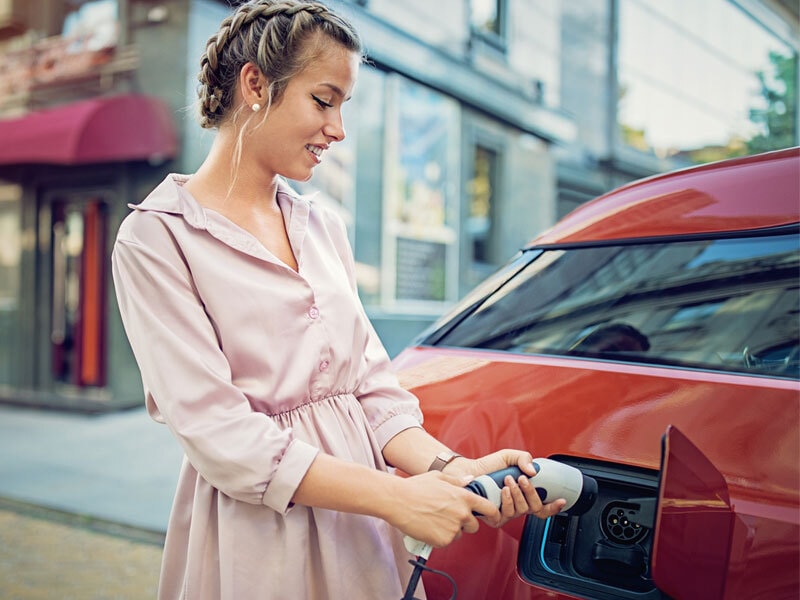When given the opportunity, Australians have shown great willingness to be part of more sustainable solutions. Just one look at our world-leading solar panel uptake proves that, as more than 30% of Australian households now have rooftop solar PV. And now, more and more people are preparing to take the next step – getting the wheels turning on owning an electric vehicle (EV).
What you need to know about transitioning to an EV
It was a slow start, but EV sales have had a massive uptick in the last five years. According to the Electric Vehicle Council, new EV purchases have roughly doubled every year since 2020. By the end of 2024, there were over 260,000 EVs on Australian roads.
A total of 85,319 EVs were sold up the end of September 2024, representing 9.5% of the new car market. The Federal Government’s Electric Vehicle Strategy has helped increase EV uptake, with a commitment to increase the supply of affordable and accessible EVs and improve charging infrastructure.
With more EV models on the market and more certainty around our charging infrastructure, now could be the time to swap petrol power for an electric machine. But what’s the difference as a driver? We’ve broken down what you need to know about costs, charging, batteries, government incentives and how we can help make your switch to an EV easier.
Driving the shift
The number of electric vehicle makes and models available in Australia continues to rise. You can choose EVs from well-known car brands like BMW, Hyundai, Nissan, Kia and Ford, as well as newer EV-only players like Tesla, BYD and Polestar. With a bigger range of models and price points, it makes it much easier to find an EV that fits the way you drive, your sense of style and budget. Read our guide to choosing your first EV for all the things you need to consider.
One way to make sure you love your new car is with an AGL EV subscription. You can try an EV on a month-to-month, 6- or 12-month subscription agreement. You can even swap cars every six months depending on availability, and the solution comes with everything you need.
Be in charge wherever you are
With improving charging technology and the number of charging stations around the country rapidly increasing, charging your electric vehicle has never been easier – on the go and at home.
Smart chargers make charging at home quick and easy, so you’re ready to roll with a full battery each day. Find out all you need to know about EV charging at home, including ways to save on your power bill, in this article. We’ve even covered some additional benefits of home charging, including using your EV battery as a power source at home and giving back to the grid. You can also read FAQs on EV batteries which includes safety, life cycle and sustainability.
And if you want to know more about charging on the go, this article gives you the rundown on the types of public chargers, how to find them and some handy dos and don’ts.

Busting EV range myths
EVs are now better equipped to handle long days of work, road-tripping and running errands. And that’s thanks to better battery tech and an improved charging infrastructure. Think about how much you really drive your car every day. How long is the drive to work, kids’ sports or the shops? Many EVs in Australia have ranges of over 450km, so you shouldn’t have any trouble with your daily drive, or longer distances.
Read about how AGL staff members Andy and Shiv went on an EV roadtrip from Melbourne to Sydney. You’ll find out how they mapped their route, how many times they stopped to recharge and how the drive compared to a petrol car.
Affordable and sustainable
One reason people want to switch to an EV is to save money on petrol. While your exact savings will vary based on petrol and energy prices, you can use this calculator to estimate how much charging at home will cost.
According to the National Electric Vehicle Strategy report released in 2023, a petrol car consumes around 10 litres per 100 km and costs around $2,400 to fuel each year. In comparison, the average EV consumes around $400 worth of electricity per year (EVC 2022a).
Another way your new EV can help your wallet is by making less trips to the mechanic. Electric vehicles have fewer moving parts, so there’s less chance of things breaking and needing to be replaced.
Incentives for switching to an EV
As part of a national push for higher EV adoption rates, governments at both federal and state level have introduced incentives to make it easier to get into an EV.
At a national level, the electric cars exemption is the main one, which provides an exemption from Fringe Benefits Tax for novated leases (using salary sacrifice) and company cars. This incentive reduces the cost of paying for an eligible EV and covering car running costs through a novated lease by thousands of dollars per year. We even have options for salary packaged EV subscriptions, ask your employer if you’re interested.
Incentives vary across the states, including registration and stamp duty discounts in ACT and NT, while WA and TAS offer $3,500 and $2,000 rebates on EVs respectively. Check the Electric Vehicle Council website for a handy roundup of current initiatives.
There are plenty of reasons to join the change by getting behind the wheel of an EV, and we’re here to help. From EV subscriptions to at-home charging and off-peak discounts, we’re with you every step of the journey.
Ready for a more sustainable way to drive?
Getting an electric vehicle might be easier than you think. We have the experience and answers to help you transition from your petrol vehicle to your first EV.



